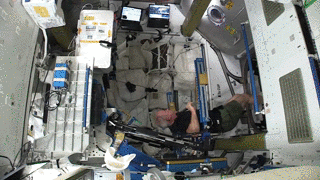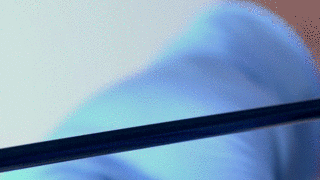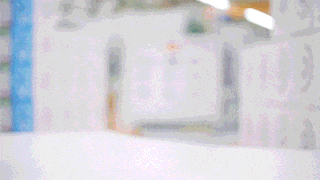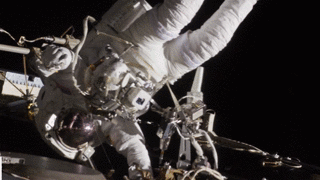#we are in the process of molding them like playdough
Explore tagged Tumblr posts
Text

pondering ocs
silas > ezra > evangeline
#ocs#oc#original characters#there’s some old stuff around of them#I’m sure#character design#they’re joint ocs with a friend but I am fond of how these sketches turned out#we are in the process of molding them like playdough
219 notes
·
View notes
Text
6 Ways NASA Technology Makes You Healthier
An important part of our mission is keeping astronauts strong and healthy during stays in space, but did you know that our technology also helps keep you healthy? And the origins of these space innovations aren’t always what you’d expect.
As we release the latest edition of NASA Spinoff, our yearly publication that celebrates all the ways NASA technology benefits us here on Earth, let’s look at some ways NASA is improving wellness for astronauts—and everyone else.
1. Weightless weight-lifting

Without gravity to work against, astronauts lose bone and muscle mass in space. To fight it, they work out regularly. But to get them a good burn, we had to get creative. After all, pumping iron doesn’t do much good when the weights float.
The solution? Elastic resistance. Inventor Paul Francis was already working on a portable home gym that relied on spiral-shaped springs made of an elastic material. He thought the same idea would work on the space station and after additional development and extensive testing, we agreed.
Our Interim Resistive Exercise Device launched in 2000 to help keep astronauts fit. And Francis’ original plan took off too. The technology perfected for NASA is at the heart of the Bowflex Revolution as well as a new line of handheld devices called OYO DoubleFlex, both of which enable an intensive—and extensive—workout, right at home.
2. Polymer coating keeps hearts beating

A key ingredient in a lifesaving treatment for many patients with congestive heart failure is made from a material a NASA researcher stumbled upon while working on a supersonic jet in the 1990s.
Today, a special kind of pacemaker that helps synchronize the left and right sides of the heart utilizes the unique substance known as LaRC-SI. The strong material can be cast extremely thin, which makes it easier to insert in the tightly twisted veins of the heart, and because it insulates so well, the pacemaker’s electric pulses go exactly where they should.
Since it was approved by the FDA in 2009, the device has been implanted hundreds of thousands of times.
3. Sutures strong enough for interplanetary transport

Many people mistakenly think we created Teflon. Not true: DuPont invented the unique polymer in 1938. But an innovative new way to use the material was developed to help us transport samples back from Mars and now aids in stitching up surgery patients.
Our scientists would love to get pristine Martian samples into our labs for more advanced testing. One complicating factor? The red dust makes it hard to get a clean seal on the sample container. That means the sample could get contaminated on its way back to Earth.
The team building the cannister had an idea, but they needed a material with very specific properties to make it work. They decided to use Polytetrafluoroethylene (that’s the scientific name for Teflon), which works really well in space.
The material we commonly recognize as Teflon starts as a powder, and to transform it into a nonstick coating, the powder gets processed a certain way. But process it differently, and you can get all kinds of different results.
For our Mars sample return cannister prototype, the powder was compressed at high pressures into a block, which was then forced through an extruder. (Imagine pressing playdough through a mold). It had never been done before, but the end result was durable, flexible and extremely thin: exactly what we needed.
And since the material can be implanted safely in the human body—it was also perfect as super strong sutures for after surgery.
4. Plant pots that clean the air

It may surprise you, but the most polluted air you breathe is likely the air inside your home and office. That’s especially true these days with energy-efficient insulation: the hot air gets sealed in, but so do any toxins coming off the paint, furniture, cooking gas, etc.
This was a problem NASA began worrying about decades ago, when we started planning for long duration space missions. After all, there’s no environment more insulated than a spaceship flying through the vacuum of space.
On Earth, plants are a big part of the “life support” system cleaning our air, so we wondered if they could do the same indoors or in space.
The results from extensive research surprised us: we learned the most important air scrubbing happens not through a plant’s leaves, but around its roots. And now you can get the cleanest air out of your houseplants by using a special plant pot, available online, developed with that finding in mind: it maximizes air flow through the soil, multiplying the plant’s ability to clean your air.
5. Gas sensor detects pollution from overhead

Although this next innovation wasn’t created with pollution in mind, it’s now helping keep an eye on one of the biggest greenhouse gasses: methane.
We created this tiny methane “sniffer” to help us look for signs of life on Mars. On Earth, the biggest source of methane is actually bacteria, so when one of our telescopes on the ground caught a glimpse of the gas on Mars, we knew we needed to take a closer look.
We sent this new, extremely sensitive sensor on the Curiosity Rover, but we knew it could also be put to good use here on our home planet. We adapted it, and today it gets mounted on drones and cars to quickly and accurately detect gas leaks and methane emissions from pipelines, oil wells and more.
The sensor can also be used to better study emissions from swamps and other natural sources, to better understand and perhaps mitigate their effects on climate change.
6. DNA “paint” highlights cellular damage

There’s been a lot of news lately about DNA editing: can genes be changed safely to make people healthier? Should they be?
As scientists and ethicists tackle these big questions, they need to be sure they know exactly what’s changing in the genome when they use the editing tools that already exist.
Well, thanks to a tool NASA helped create, we can actually highlight any abnormalities in the genetic code with special fluorescent “paint.”
But that’s not all the “paint” can do. We actually created it to better understand any genetic damage our astronauts incurred during their time in space, where radiation levels are far higher than on Earth. Down here, it could help do the same. For example, it can help doctors select the right cancer treatment by identifying the exact mutation in cancer cells.
You can learn more about all these innovations, and dozens more, in the 2019 edition of NASA Spinoff. Read it online or request a limited quantity print copy and we’ll mail it to you!
2K notes
·
View notes
Text
The Heaven Simulation
A friend of mine had an assignment for English that required her to write a short story and needed some help. I sat with her and worked on a few things: story structure (three act model) and show don't tell along with conflict, foreshadowing and how to build emotional weight. Anyway, once she had a story planned out, I decided to take what she had and write my own version. And seeing as I haven't posted in a while, this is it. Sorry if it's not as polished as usual, I rushed it due to life being in the way.
I guess it all started with the pain, and now it seems that’s the way it’s going to end. Some would say it started with the diagnosis, the life sentence, terminal brain cancer at just 24, but that didn’t really scare me to begin with. The first time I woke up with my body quaking against my will and my stomach cramping up until it emptied over and over again, the stomach acid burning my throat and the bitter, sour taste of bile tingling off of every taste bud in my mouth. That was when I signed the LifeTech contract. The heaven simulation was my only choice, because the doctors assured me that it was only going to get worse.
The course of medications changed, a list of 8 different drugs quickly whittled down to just 1 soft edged blue speckled oval tablet about the size of grain of rice. It started with just one a day, but soon it seemed like handfuls, and the whole time the pain increased. They gave me time though, time before they plugged me in and I slipped away from the world, time to say goodbye. The party was lavish, with relatives even travelling down from Maine for the first time since my christening, and whose names I couldn’t even keep straight. They’d all come to say goodbye to the dying girl, pay their respects to the nearly dead. It didn’t matter though; Arkyn was there, our last day together, after all the days we’d spent together so far, that last day meant the world to me. We just pointed and laughed as they all slowly paraded past me one by one, naming off all the animals as they came to visit the dying human girl in the zoo before she was released into the wild.
The first day in the simulation seemed like a blessing. A still ocean pressed around with its warm, summery wetness, the smell of the salty sea breeze in my nostrils and the weight of my own body lifted off of my limbs. The watery world drained softly away and left me standing in the sand, the course texture scrubbing at feet made thick with a lifetime of spending my days barefoot in the outdoors with Arkyn.
The people seemed nice, even the simulated stewards who tirelessly worked to ensure we would all want for nothing. They showed me to my room on that first day, a plain simple affair with minimalist furnishings of plain wood. And they showed me how to work the systems, to get the most out of my heaven simulation. Everything seemed perfect, but it didn’t last.
It took three days for the pain to come back. A simple headache to begin with, that dull tightness at the back of your skull that seems to persist for days without notice. A week later it was a constant throbbing annoyance, persistent but not enough to spoil the bliss of the simulation. At night however, when there was nothing left to distract me from the discomfort, as I lay on that simple wooden bed, against the impossibly soft mattress, I wished Arkyn was with me again to brush aside my hair and laugh about our day together until I forgot the pain and finally fell asleep.
The doctors dismissed what I had to say as I met with them through the vid screens, the only way for the outside to come into the simulation. “You’ve got to give it time Rylan,” Doctor Uzbeki told me. “The simulation doesn’t work quite the same way for everyone, it may take a while to calibrate to your personal pain tolerance.” The soft smile and gentle eyes belied a patience that only barely masked the condescension in his words. “But the pain is getting worse doctor,” I complained, “every day I wake up and it feels like there is more and more stuff crammed inside my head, squishing everything else up against the inside of my skull, like playdough into a mold.” The smile faded from his lips as the tightness in my chest rose, and I could feel my eyes start to dart across the screen and my breath shorten. “Just calm down Rylan, I’ll talk to the techs. Maybe they can help speed up the process. Everything will be fine, I promise.”
A week more went by, and each day the pain just seemed to increase. It seemed like even the stewards were avoiding me now, to say nothing of the other residents who didn’t even want to contemplate that their heaven might in some way be tainted. And my last three appointments with Doctor Uzbeki had been cancelled. Emergencies with other patients they said. And here I thought he only worked for LifeTech, weren’t all his patients somewhere in here with me? How could there be an emergency with someone whose life was a perfect paradise? The only option was that he was avoiding me.
The calendar in my room continued to countdown the time I had left though. Just a few more days. I had started writing letters to my loved ones. Final goodbyes from a girl they had already said farewell to. But I still couldn’t bring myself to write the last one. The only one that really mattered. And I couldn’t let myself run out of time before I got to say my last goodbyes to Arkyn.
And then this morning I woke up and the world was screaming inside my head. My eyes wouldn’t focus, and I couldn’t make my body move the way it was supposed to. This was worse than anything I had faced on the outside; it couldn’t be a simple calibration error. But there on the nightstand words scrawled over the last blank piece of paper. A familiar handwriting that had somehow reached into the simulation against all odds. Arkyn had found a way to do the impossible, and send me a message. It was brief, but her handwriting was unmistakable, the funny way she quirked her e’s and the ridiculous straightness of her i’s. “It’s all a lie,” the message read. “You’ve got to get out Rylan, get out while you still can.”
The tremoring in my heart started immediately. The Calendar now read just one day remaining. But there was a way out. The Doctors had promised the door in the middle of the park. One last way to go back to our lives, a one way ticket back to our families. I started with a crawl; it was all I could manage. But my feet soon found their place beneath me as I made my way out through the lobby. The other residents stared as I shook and dry reached, every muscle in my body contracting and relaxing of their own volition. Something was clearly wrong, and they could no longer deny the truth before their eyes.
The door way stood like a giant hospital emergency exit, complete with green exit sign, right in the middle of the garden. A harsh grey contrast to the lush green of the vegetation that surrounded it, a final reminder of where we all really were, not in some idyllic paradise, but a hospital ward, drugged into a coma that kept us at peace. I yanked on the door and dropped to my knees and wept. Before me was not the escape we had been promised. In its place, a stark, grey cinder block wall, stark and uncaring as I fell against it, tears streaming down my face, my fists impotently beating against it.
2 notes
·
View notes
Text
Many Worlds of KUTiLKA
If you discovered this post directly, without going through the two preceding ones, this is the third part of a series explaining a digital construction kit project. The one we call KUTiLKA.
In the first post, we described what a digital construction kit is, and the second article talks about uses of KUTiLKA. Now we are getting to the final ingredient.
Flavours and tastes
What flavor of ice cream do you like the most? Imagine all them disappears tomorrow and you can save just single one. Which one would it be?
We are famous among our friends for asking pretty weird questions from time to time. Fortunately, they are nice and answering them willingly.
Unsurprisingly, the results varied from traditional "vanilla" or "chocolate" to some unusual like "marshmallow" to unspeakable combinations our kids prefer. Including a friend who is not into ice creams at all, one that loves sorbet, as well a one who is lactose intolerant and is grateful for any flavor as long as it does not cause any digestion issues. Someone also accused us of being insensitive once. Perhaps the skating on a local ice rink in the middle of the chilliest nights of the year is not the best time to raise the ice cream topic?

In any case, none was happy with the idea of the world, with only one ice cream taste.
What does it mean? Unsurprising, people like variety. Be it in flavors, meals or sources of its origin. Also, we don't know many people, who would like everything. For example, an ice cream that tastes like all possible flavors together sounds quite disgusting to almost anyone. As it is true for the things we eat, it also relevant to different kind of art, genres, and themes we cherish.
Worlds Themes
There were almost no constraints during the initial phase of KUTiLKA project. Everything we did was new and exciting. It took some time until we started seeing commonalities and slowly began categorizing things. We found that grouping construction kits into specific themes is extremely beneficial not only for production but mainly for usability. One day, we will write an extensive post describing our experience of learning it the hard way for everyone's amusement.
The practical outcome for all creators using KUTiLKA is that you can choose from a couple of themes. You can pick the one that is the closest to your heart, the way you think or the project you are doing.
And before you ask, yes we are preparing multiple construction kits for each theme, and yes, there will be more themes and exciting worlds in the future.
However, for a start, we came with these easily identified thematic worlds.

KUTiLKA: Skittlik is our "starter kit." It is a digital form of traditional wooden construction kit, with the unique polished look and familiar shapes. It is very suitable for complete beginners, who just start with computer graphics. We hope they will appreciate the accessibility and familiarity of the kit.
Seasoned professionals will immediately note the high quality of materials of all the pieces. The creations made from KUTiLKA: SKITTLIK looks so natural that you can almost feel a sensation of beechwood smell.
We created the world of SKITTLIK in cooperation with team PISLIK.CZ, makers of traditional wooden toys.
KUTiLKA: SKITTLIK is perfect for creating toys, furniture, timber constructions or just anything that is wooden.

KUTiLKA: Clay Matters is pure fun. Sculptures. Pottery. Ceramics. Sandcastles. Playdough creations. Apparently, humans like to mold the matter, to shape it into practical or aesthetically pleasing results. And have fun with it. So it is not very surprising, that we based one of the themes around it. It was inevitable.
We prepared many distinct and useful shapes, different materials and color variations. All that so you can create stuff that looks unlike anything else you would consider "computer graphics."
Even though modeling on a computer does not have the same tactile feedback, it has other benefits. You will not mess up your desk. Your creations cannot dry up or collapse during the process. You have absolute freedom, and you can share the results quickly.
If you want to create an organic design, cute characters or charming items, there is no better start than with KUTiLKA: Clay Matters.

KUTiLKA: Heavy Metal is for anyone like us, who love designing strange mechanical gadgets. We enjoy machines. We want to see exciting new robots, ideally with shiny metal armatures and even more polished cover plates.
The world of KUTiLKA: Heavy Metal is for creators who like the technology. No matter if you want to make a steampunk submarine, a set of curious contraptions, a mechanical clock, a giant train engine in the shape of a crocodile, or a tiny flying spy-fly. Now you can make it all and have a lot of fun during the creation process.

KUTiLKA: Nature Calling is a unique opportunity to continue, where nature stopped. We carefully selected and scanned various natural elements to allow you to build, modify and explore them.
If you ever wanted to make a personal demigod or build your very own imaginative world, now you have a chance. Things that you make with this KUTiLKA kit are always unique but also feels very familiar, as nature is part of our DNA. As we like to say, you don't have to waste your time making of what nature created already. Now you can go far beyond that.
Let the creation begin
Our goal is to make KUTiLKA useful, fun and accessible. That is why we are making sure, all worlds and elements are compatible together. You can stick to single one, and it is also the best way, how to start exploring each world. However, once you get familiar with it, feel free to go the wild style and mix elements from different worlds into surprising new combinations.
We can't guarantee results will always be impressive, but it will be fantastic fun nevertheless. At least as much as nature had when created platypus.

0 notes